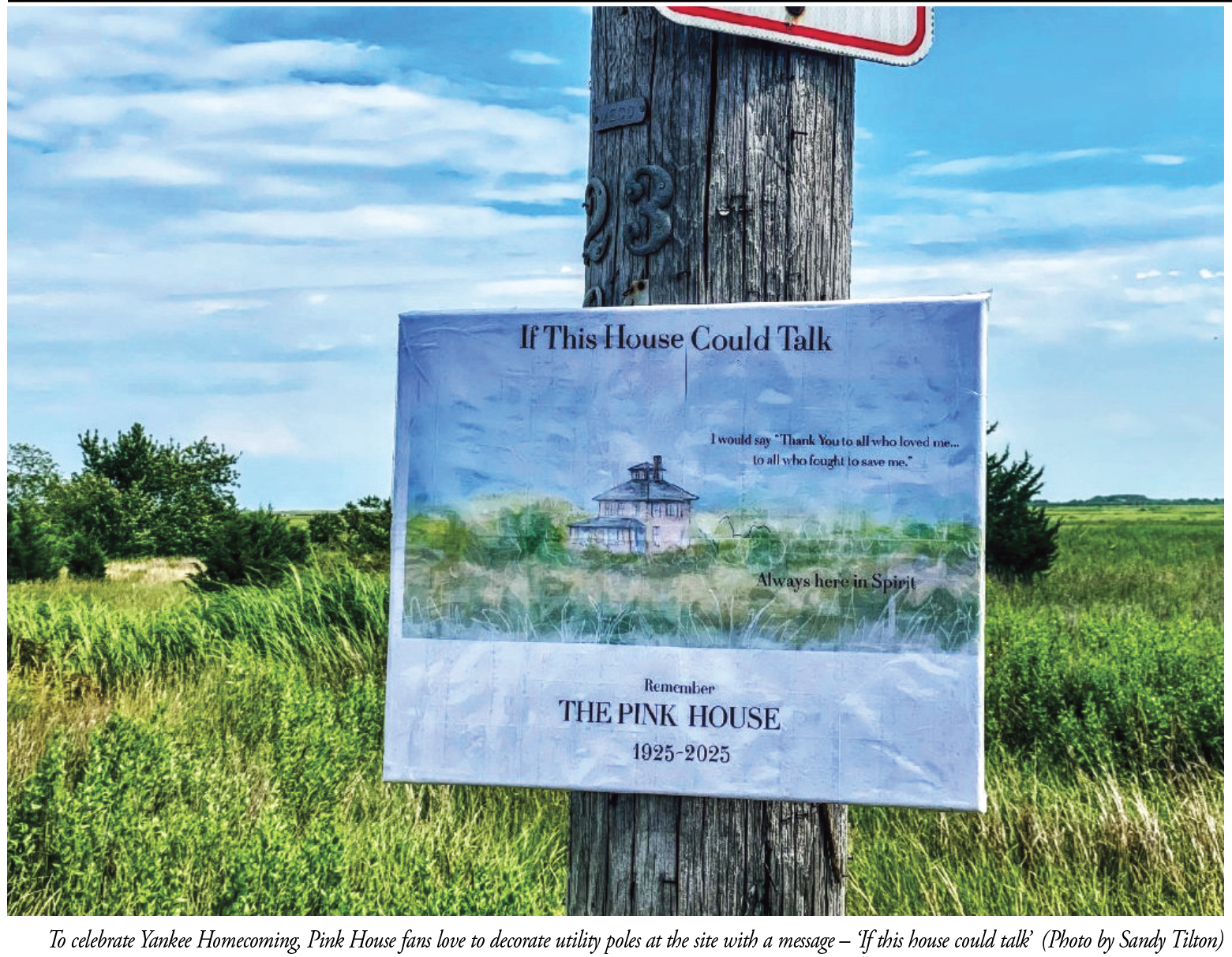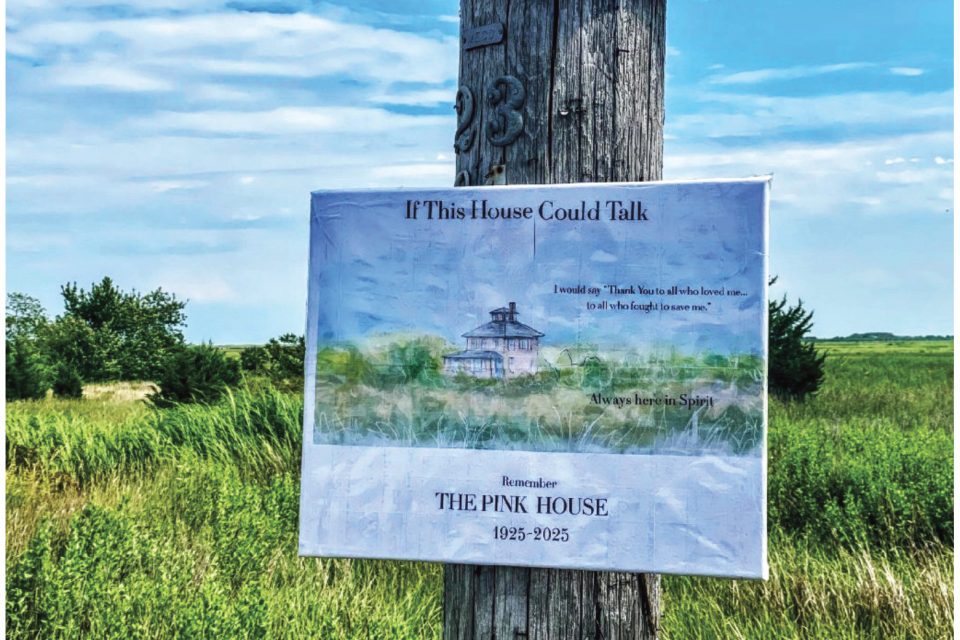NEWBURY – The Pink House, which stood at the edge of the Great Marsh for 100 years, may soon be remembered with a sign at the spot where it once stood.
Last week, the Newbury SelectBoard voted 4-0, with one member abstaining, to approve a request by resident Bob Conners to install the sign. If approved by the town’s Building Inspector and Conservation Commission, the 5-foot by 3-foot sign could be up by fall, Conner said.
It would stand on town land across from the well-known Bob’s Lobster.
The proposed sign will read:
1925 – 2025
The Pink House
Honoring 100 Years of Memories
Torn down March 11, 2025,
BUT NEVER FORGOTTEN
The Pink House was built in 1925 by Gertrude W. Cutter for her son’s family. Over the years, the little house with the wide marsh view changed hands several times before being owned and eventually torn down by the U.S. Fish & Wildlife Service.
Even though the house is no longer standing, its image remains part of the area’s history. Artists painted it. Visitors stopped to take photos. Locals loved it.
In June, Tilton and fellow Pink House Artisan Kathy Culbert hosted a celebration to mark the house’s 100th birthday.
“The Pink House has and will continue to be an important part of this community,” Tilton said. “You cannot erase or forget local history. It really is part of who we are.”
Gov. Maura Healey, State Sen. Bruce Tarr, and Newburyport Mayor Sean Reardon issued official citations in honor of the house. Mayor Reardon’s citation read in part:
“Built in 1925, this beloved landmark quietly reached its 100th year earlier this year—before its demolition on March 11. For generations, The Pink House was more than just a structure. It inspired artists, welcomed visitors, and helped define the spirit of Newburyport and Plum Island. Though the house itself is gone, its image and spirit endure—etched into the collective memory of a community that loved it dearly.” ♦





